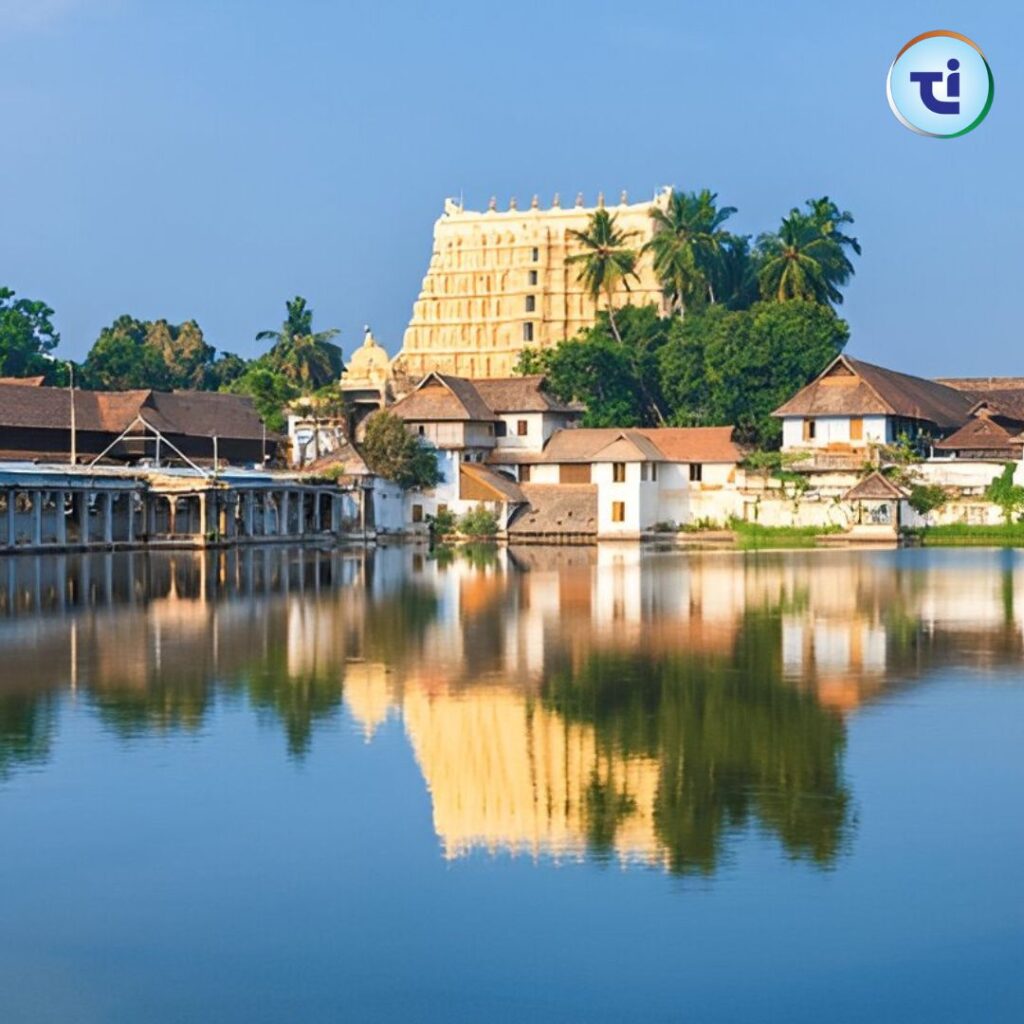India is home to countless temples that showcase its rich cultural heritage and architectural brilliance. Among these, Sree Padmanabhaswamy Temple, located in the heart of Thiruvananthapuram, Kerala, stands as one of the most famous and mysterious temples in the world. Known for its majestic Dravidian architecture, deep-rooted history, and unimaginable hidden treasures, this temple is both a place of spiritual devotion and global intrigue.
Historical Background of Sree Padmanabhaswamy Temple
The origins of Sree Padmanabhaswamy Temple date back to ancient times, with references found in Sangam literature from the early centuries CE. According to historians, the temple existed well before the 8th century, though its current structure was renovated in the 16th century by the Travancore royal family.
The temple is dedicated to Lord Vishnu, worshipped here as Anantha Padmanabha, meaning the “Lord reclining on the serpent Anantha.” The Travancore kings considered themselves servants of Lord Padmanabha, ruling in his name. Even today, the royal family plays a ceremonial role in the temple’s activities.
Architectural Marvel of the Temple
The temple’s architecture is a striking example of Dravidian style, influenced by Kerala’s unique design elements. Its gold-plated gopuram (tower) stands tall, adorned with intricate sculptures that narrate stories from Hindu mythology.
Inside, the sanctum sanctorum houses the massive idol of Lord Padmanabha reclining on the serpent Adishesha, with Lord Brahma seated on a lotus emerging from Vishnu’s navel. The idol is made using a rare mix called Katusarkara Yogam, a combination of 108 materials including herbs and minerals, giving it a unique preservation quality.
The temple also has long pillared corridors, ornate carvings, and beautiful murals depicting scenes from the Ramayana and Mahabharata.

The Legend of Sree Padmanabhaswamy Temple
Hindu mythology connects this temple to sage Divakara Muni, an ardent devotee of Lord Vishnu. According to legend, the Lord appeared to the sage in the form of a small boy who later revealed his cosmic form reclining on Anantha, spanning over several kilometers. The sage requested him to remain there, and that is where the temple was eventually built.
The Travancore kings pledged themselves as Padmanabha Dasa (servants of the deity) and ruled as representatives of Lord Padmanabha, bringing prosperity to the kingdom.
The Mysterious Treasures of the Temple
Sree Padmanabhaswamy Temple is often called the “richest temple in the world” due to its enormous hidden treasures. In 2011, upon the orders of the Supreme Court of India, several underground vaults were opened, revealing gold, diamonds, precious stones, antique jewellery, and priceless artefacts worth billions of dollars.
The vaults, labelled A to F, are centuries-old storage chambers used by the royal family to keep offerings and treasures. While most vaults were opened, Vault B remains sealed, shrouded in mystery and believed to be protected by divine forces. Local legends suggest that opening it without proper rituals could bring misfortune.
The treasure has deep historical value, as it includes gold coins from different civilizations, ancient crowns, golden idols, and ornaments gifted by kings and devotees over centuries.
Religious Significance and Rituals
Sree Padmanabhaswamy Temple is not just about wealth — it is a major spiritual hub for devotees of Lord Vishnu. The temple follows strict Tantric rituals and traditional Kerala-style worship methods.
Some key rituals and festivals include:
- Laksha Deepam — Held once every 6 years, this grand festival lights up the temple with one lakh oil lamps, creating a breathtaking spiritual atmosphere.
- Alpasi and Painkuni Festivals — Biannual festivals featuring processions, traditional music, and Vedic chanting.
- Vaikunta Ekadasi — A major Vishnu festival when thousands of devotees visit for blessings.
Entry is restricted to Hindus, and a strict dress code is enforced — men must wear mundu (traditional dhoti), while women must wear sarees or traditional attire.
Economic and Cultural Importance
Apart from its religious role, Sree Padmanabhaswamy Temple has contributed significantly to Kerala’s cultural identity. The temple attracts pilgrims and tourists from across the world, boosting local businesses and preserving traditional art forms such as Kathakali, Carnatic music, and mural painting.
The temple administration also funds educational, cultural, and charitable activities, reflecting its role as a center for community development.
The Ongoing Supreme Court Case and Management
The temple’s treasures and administration have been subjects of legal battles. In 2020, the Supreme Court of India upheld the Travancore royal family’s rights to manage the temple, recognizing their centuries-old connection and service to Lord Padmanabha.
The court also emphasized the protection and documentation of the treasures, ensuring their safety for future generations without commercial exploitation.
Why Sree Padmanabhaswamy Temple is Unique
Several aspects make this temple unlike any other:
- Unimaginable Wealth — It holds one of the largest known treasure collections in history.
- Living Heritage — Still managed according to ancient customs and royal traditions.
- Architectural Brilliance — A fusion of Dravidian and Kerala temple architecture.
- Mystical Legends — The mystery of Vault B continues to intrigue historians and devotees alike.
Travel Tips for Visitors
If you plan to visit Sree Padmanabhaswamy Temple:
- Best Time to Visit: October to March, when the weather is pleasant.
- Dress Code: Men should wear mundu, and women should wear sarees or long traditional attire.
- Temple Timings: Generally open from 3:30 AM to 12:00 PM and 5:00 PM to 7:30 PM (check locally as timings may change).
- Nearby Attractions: Napier Museum, Kovalam Beach, and Poovar Island.
Conclusion
Sree Padmanabhaswamy Temple is not just a place of worship — it is a symbol of Kerala’s spiritual devotion, royal heritage, and cultural pride. Its ancient legends, architectural beauty, and hidden treasures make it one of the most fascinating religious sites in the world.
Whether you visit as a pilgrim or a history enthusiast, the temple offers an unforgettable experience — reminding us of India’s timeless tradition where faith and heritage stand above material wealth.




